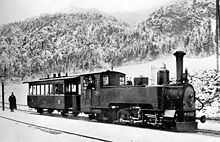| Second Industrial Revolution | |||
|---|---|---|---|
| c. 1870 – c. 1914 | |||
 | |||
| Location | |||
| Key events |
| ||
Chronology
| |||
| History of technology |
|---|


The Second Industrial Revolution, also known as the Technological Revolution,[1] was a phase of rapid scientific discovery, standardisation, mass production and industrialisation from the late 19th century into the early 20th century. The First Industrial Revolution, which ended in the middle of the 19th century, was punctuated by a slowdown in important inventions before the Second Industrial Revolution in 1870. Though a number of its events can be traced to earlier innovations in manufacturing, such as the establishment of a machine tool industry, the development of methods for manufacturing interchangeable parts, as well as the invention of the Bessemer process and open hearth furnace to produce steel, later developments heralded the Second Industrial Revolution, which is generally dated between 1870 and 1914 (the beginning of World War I).[2]
Advancements in manufacturing and production technology enabled the widespread adoption of technological systems such as telegraph and railroad networks, gas and water supply, and sewage systems, which had earlier been limited to a few select cities. The enormous expansion of rail and telegraph lines after 1870 allowed unprecedented movement of people and ideas, which culminated in a new wave of globalization. In the same time period, new technological systems were introduced, most significantly electrical power and telephones. The Second Industrial Revolution continued into the 20th century with early factory electrification and the production line; it ended at the beginning of World War I.
Starting in 1947, the Information Age is sometimes also called the Third Industrial Revolution.
- ^ Muntone, Stephanie. "Second Industrial Revolution". Education.com. The McGraw-Hill Companies. Archived from the original on 2013-10-22. Retrieved 2013-10-14.
- ^ The Second Industrial Revolution: 1870–1914